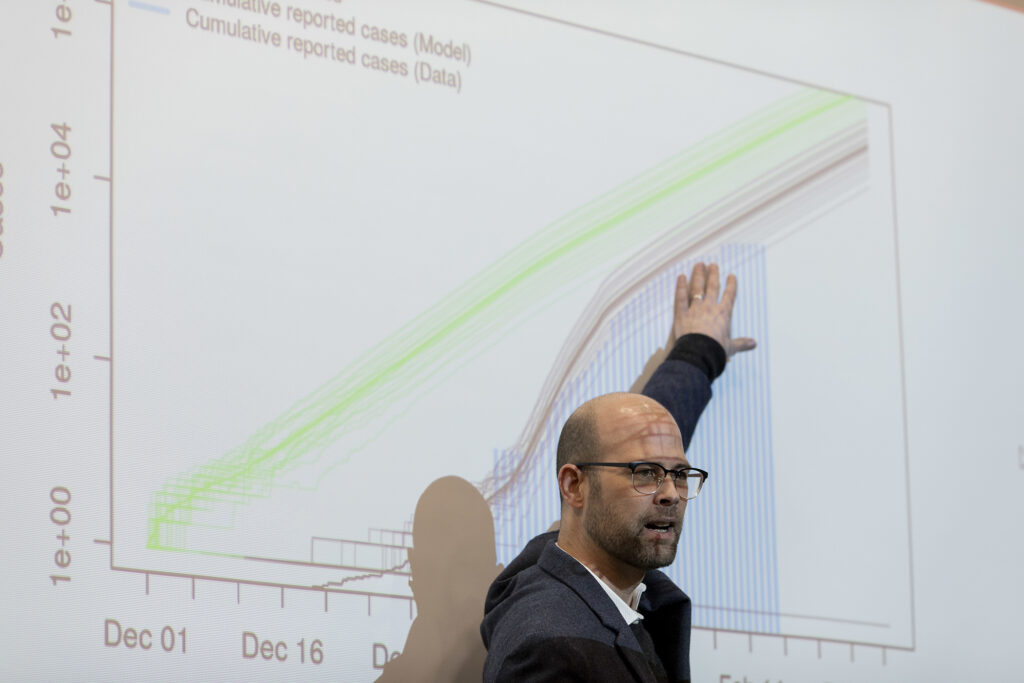A new University of Georgia study estimates that social distancing measures enacted across the state in March have reduced the total number of reported cases by 81% and likely saved more than 2,900 lives. Any relaxation of those measures, the study finds, has the potential to put the state back on a curve of exponential growth, resulting in as many as 38,000 additional cases and 1,500 additional deaths through June 7.
“Without widespread testing or intensive contact tracing, we expect the relaxation of social distancing measures will substantially increase the number of illnesses and deaths caused by COVID-19 in Georgia,” said lead author John Drake, a distinguished research professor who directs the Center for the Ecology of Infectious Diseases in the university’s Odum School of Ecology. “Our models underscore the ease with which the virus can be transmitted, but they also demonstrate the power that everyday citizens have to fight this pandemic through social distancing.”
The study, which took into account variables such as the number of susceptible, infected and recovered individuals, as well as metrics on human movement patterns derived from cellphone data, was published online at the COVID-19 Portal that Drake and his colleagues maintain. The forecasts will be updated regularly as new data becomes available, and, like the pandemic itself, are responsive to actions that can accelerate or slow the transmission of the virus.
“Our analysis shows that the future spread of COVID-19 strongly depends on the choices individuals make and emphasizes the importance of continued behaviors that drive down transmission,” said study co-author Andreas Handel, an associate professor of epidemiology and biostatistics in UGA’s College of Public Health and a CEID member.
The researchers examined several scenarios to gauge the impact of social distancing interventions. Had there been no intervention whatsoever, their model estimates there would have been more than 1 million cases and 162,000 deaths in Georgia by June 7. Other scenarios they considered include increasing social distancing, maintaining social distancing at the April 24 level, relaxing social distancing and a return to pre-social distancing patterns.
Data on movement patterns in Georgia shows a steady decrease from the beginning of March until bottoming out at 57% of baseline on April 11. Since then, movement has drifted upward and is now around 74% of baseline.
A relaxation of social distancing to 80% of baseline mobility is projected to result in more than 280,000 additional cases and more than 20,000 additional deaths. This compares to a best-case scenario in which mobility is reduced to 30% of baseline, with an estimated 24,500 new cases and 7,600 deaths.
“Epidemics are not like hurricanes or other natural disasters that independently pass through a place,” Drake said. “They respond to our actions, for better and for worse. The wide range of possible outcomes underscores that we are at a tipping point. Runaway growth in cases and deaths is a very real possibility.”
Drake noted that each new coronavirus infection can lead to two to three new infections in a week. Those two or three new infections can go on to spark two to three additional infections, and the pattern quickly results in a rapid surge of new infections, hospitalizations and deaths.
Increased testing to speed the identification of new infections, combined with contact tracing to educate and potentially isolate those who have been in contact with infected individuals, can help reduce transmission of the coronavirus, but Drake said that current testing capacity is limited and that contact tracing requires a significant investment in personnel.
“Social distancing is the best tool we have right now for controlling the coronavirus pandemic,” Drake emphasized. “It’s proven to be effective in the past, and people should continue to minimize activity that puts themselves and their community in harm’s way.”
